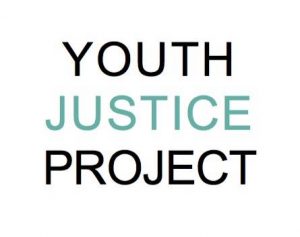North Carolina is the only state that automatically processes every 16 and 17 year-old through its adult criminal justice system without an opportunity for the youth to appeal for a transfer to juvenile court.[1] In fact, juvenile court jurisdiction in 41 states and the District of Columbia extends to most persons under the age of 18.[2]
The consequences of this policy outlier are harmful to North Carolina’s youth and place them at a severe disadvantage compared to their peers in other states.
[3] Furthermore, studies have shown that youth are more likely to receive rehabilitation through the juvenile justice system and that recidivism rates are higher for youth transferred to the criminal justice system.[4] In addition, North Carolina youth face the harsh collateral consequences associated with criminal justice involvement at a much younger age, creating obstacles to obtaining gainful employment, financial aid for higher education, and even government housing—all because of adolescent mistakes. In these ways and more, North Carolina disadvantages its youth through its policy that is a departure from the national trend.
The results of North Carolina’s regressive youth justice policy clearly show that change is needed. A very small number of offenders may require the incapacitation that the criminal justice system provides, but there is no need to prosecute all youth as adults by default, especially since North Carolina already employs a robust transfer process to remove youth offenders of certain crimes to the criminal justice system.[5] North Carolina’s juvenile justice jurisdiction would have expanded if House Bill 399, the Young Offenders Rehabilitation Act, had been enacted last summer.[6] Instead, North Carolina’s youth languish as the bill lies with the House Committee on the Judiciary II.[7]
A primary concern of North Carolina lawmakers with expanding the jurisdiction of the juvenile justice system is funding.[8] Quite simply, North Carolina’s juvenile justice system is already under-resourced, so an expansion of its jurisdiction represents an up-front cost to its taxpayers. Fortunately, morality is not the only incentive for raising the age of juvenile jurisdiction. In 2011, the Vera Institute compiled a report that provided a cost-benefit analysis of enacting this change in policy, finding that a net benefit of $52.3 million annually for raising the age.[9]
The caveat to this net benefit is that the offsetting benefits of raising the age of juvenile jurisdiction do not directly return to the state. Although taxpayers would experience some savings as a result of shrinking the jurisdiction of the adult criminal justice system, the vast majority of the benefits are experienced by the youth that are spared an adult criminal conviction. These youth can expect to have higher salaries and contribute more to North Carolina’s economy long-term. Unfortunately, the short-term costs of raising the age has hindered legislation thus far. Though lack of funding is a legitimate concern for raising the age, an inspiring case study for the budgetary impact of this policy change can be found in the state of Connecticut.
Connecticut raised the age of juvenile justice jurisdiction gradually to allay a budget crisis and opposition from law enforcement.[10] Prior to 2010, Connecticut’s juvenile justice system was comparable to those in North Carolina and New York, but youth in Connecticut now experience among the highest levels of protection in the country.[11] Connecticut enacted its raise the age legislation anticipating an increase of $84 million in higher operating costs and $81 million in new construction costs,[12] which is roughly comparable to the estimates submitted by the Vera Institute for North Carolina. However, Connecticut never increased its spending on juvenile justice.[13] The large drop in total arrests for youth in this age bracket precipitated this unprecedented outcome and led to only marginal increases in population size in the state’s detention centers.[14] Furthermore, since the change in policy, Connecticut has experienced lower re-arrest rates for 16-year-olds than for youth 15 and younger,[15] demonstrating the effectiveness of keeping youth out of the adult criminal justice system.
North Carolina also has the opportunity to reap the rewards of juvenile justice reform. Like in Connecticut, arrests of youth in the 16 and 17 year-old age bracket have steadily declined since 2005 in North Carolina.[16] Specifically, total arrests in this age group declined by 36% from 2005 to 2014.[17] Therefore, the costs estimated by the Vera Institute report are likely overstated. North Carolina should seize this opportunity to emulate Connecticut’s success with juvenile justice reform and raise the age of juvenile jurisdiction to protect their youth. In so doing, this state would follow the lead of 7 other states that have recently raised the age of jurisdiction for their juvenile justice systems: Connecticut,[18] Illinois,[19] Mississippi,[20]Massachusetts,[21] New Hampshire,[22] Utah,[23] and Nebraska.[24]
Currently, the Subcommittee on Juvenile Jurisdiction for the Chief Justice’s Commission on the Administration of Law and Justice in North Carolina is drafting a report with recommendations for legislation on raising the age of juvenile jurisdiction. The subcommittee recommends raising the age of juvenile jurisdiction to include 16 and 17 year-olds, with exceptions for youth accused of Class A-E felonies.[25] This recommendation is contingent, however, upon the receipt of funding to implement the change.[26] Stakeholders adamantly maintain that raising the age without full funding would be “detrimental” to North Carolina’s court system.[27] Furthermore, the Subcommittee reemphasized[28] the predicted net benefit of the Vera Institute’s analysis and itemized the spending necessary to expand juvenile court jurisdiction.[29] Hopefully, this work will lead to new legislation that will raise the age of juvenile jurisdiction in North Carolina, or at least a revitalization of House Bill 399. Although North Carolina stands alone in its outdated youth justice policies, some of its lawmakers continue the fight to keep youth out of the adult criminal justice system.
Austin Braxton is a rising 2L law student at UNC-Chapel Hill and a summer legal intern with the Youth Justice Project of the Southern Coalition for Social Justice.
**This blog post was originally posted on the Youth Justice Project website on June 9, 2016. The original post can be found here.**
[2] http://www.ojjdp.gov/ojstatbb/structure_process/qa04101.asp.
[3] http://www.johnlocke.org/acrobat/spotlights/YoungOffenders.pdf.
[4] Id.
[5] http://www.ojjdp.gov/pubs/tryingjuvasadult/states/nc.html.
[6] http://www.ncleg.net/Sessions/2015/Bills/House/PDF/H399v1.pdf.
[7]http://www.ncleg.net/gascripts/BillLookUp/BillLookUp.pl?Session=2015&BillID=H399.
[8] http://nccalj.org/wp-content/uploads/2015/12/Minutes-12.11.2015.pdf, page 6.
[9] http://www.vera.org/sites/default/files/resources/downloads/CBA-of-Raising-Age-Juvenile-Jurisdiction-NC-final.pdf, page 11.
[10]http://www.justicepolicy.org/uploads/justicepolicy/documents/jpi_juvenile_justice_reform_in_ct.pdf, page 16.
[11] Id.
[12] Id. at 15.
[13] http://www.raisetheagect.org/results-cost.html.
[14]http://www.justicepolicy.org/uploads/justicepolicy/documents/jpi_juvenile_justice_reform_in_ct.pdf, page 16.
[15] Id. at 17.
[16] http://crimereporting.ncsbi.gov/Reports.aspx.
[17] Id.
[18]http://www.justicepolicy.org/uploads/justicepolicy/documents/jpi_juvenile_justice_reform_in_ct.pdf, page 16.
[19] http://cfyj.org/news/blog/item/raise-the-age-bills-flourish-in-2016.
[20] Id.
[21] Id.
[22] http://www.ncsl.org/research/civil-and-criminal-justice/2014-juvenile-justice-state-legislation.aspx.
[23] http://www.campaignforyouthjustice.org/news/blog/item/2015-state-legislative-sessions-an-update-on-nationwide-juvenile-justice-reforms-to-protect-youth-from-the-adult-criminal-justice-system.
[24] http://www.ncsl.org/research/civil-and-criminal-justice/2014-juvenile-justice-state-legislation.aspx.
[25] http://nccalj.org/wp-content/uploads/2016/05/May-2016-Juvenile-Committee-Meeting-POSTING.pdf, page 43.
[26] Id. at 49.
[27] Id.
[28] Id. at 37.
[29] http://nccalj.org/wp-content/uploads/2016/03/IA1509-21_H399R0.pdf.
Written By Austin Braxton
Southern Coalition for Social Justice
First in Flight, Last in Youth Justice was originally published @ Southern Coalition for Social Justice and has been syndicated with permission.
Sources:
Our authors want to hear from you! Click to leave a comment
Related Posts








